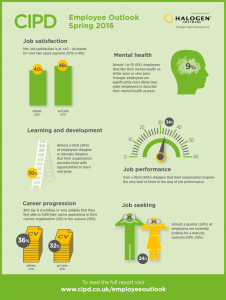Latest #research from the Chartered Institute of Personnel and Development shows that training methods that support learning in the workflow are the most useful forms of learning for employees.
The research of 2,000 adults shows that training from peers is the most useful (95%), followed by coaching (92%) and on-the-job learning (91%).
Despite the popularity of coaching, just 9% of employees said they had actually received it over the last 12 months. This trend continues with job rotation, secondment and shadowing, rated as useful by 88%, even though only 5% have taken part in the last year.
In the last twelve months, employees are most likely to have received on-the-job training (28%), online learning (26%) and learning from peers (20%).
Andy Lancaster, #cipd Head of Learning & Development Content, said: “It’s interesting to see a c onscious movement towards learning in the flow of work in this year’s survey and the benefits in terms of teamwork, knowledge-sharing and longer term employee satisfaction are significant. L&D professionals need to be at the forefront of integrated learning, to ensure that learning is an ongoing process and not ad-hoc. They also need to be versatile, understanding the evolving needs of employees while focusing on achieving long-term sustainable business growth.
onscious movement towards learning in the flow of work in this year’s survey and the benefits in terms of teamwork, knowledge-sharing and longer term employee satisfaction are significant. L&D professionals need to be at the forefront of integrated learning, to ensure that learning is an ongoing process and not ad-hoc. They also need to be versatile, understanding the evolving needs of employees while focusing on achieving long-term sustainable business growth.
Many employees are not on the receiving end of these trends, however, with 36% of respondents saying they do not receive any of these types of training. Similarly, 30% disagree that their organisation provides them with opportunities to learn and grow and over a quarter (27%) say they are dissatisfied with the opportunity to develop their skills in their job.
The survey also highlights that the number of employees feeling over-qualified for their roles has increased a third (33%), compared to less than a year ago (autumn 2015: 29%). The number of employees who say they are unlikely to fulfil their career aspirations in their current organisation has also risen (36% compared to 32% in autumn 2015).
Download the research here.



